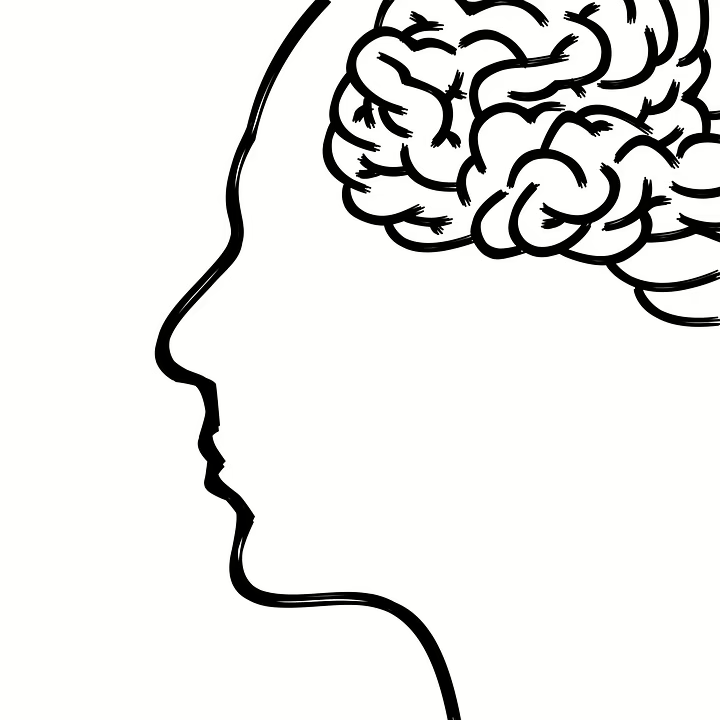The Science of Sexual Attraction: A Comprehensive Guide
[mfn 1]Sexual attraction, that potent and often perplexing force, is a fundamental driver of human behavior and social interaction. It’s the spark that ignites romantic relationships, fuels procreation, and shapes the very fabric of our societies. But beyond the subjective experience of feeling drawn to another person, lies a complex interplay of biological, psychological, and social factors that contribute to this powerful phenomenon. This comprehensive guide delves into the science of sexual attraction, exploring the diverse elements that influence who we find desirable and why. We will examine the roles of evolution, genetics, hormones, psychology, culture, and individual experiences in shaping our preferences and attractions, ultimately providing a deeper understanding of this core aspect of human existence.
I. The Evolutionary Roots of Attraction: Survival of the Fittest and Reproductive Success
[mfn 2]From an evolutionary perspective, the primary goal of life is survival and reproduction. Sexual attraction, therefore, is a mechanism that has evolved to promote these goals. The traits we find attractive in others are often indicators of their health, fertility, and ability to successfully raise offspring. Evolutionary psychology seeks to explain human behavior, including attraction, by analyzing its adaptive value in our ancestral past.
-
Physical Attractiveness as a Signal of Health and Fertility: Across cultures, certain physical features are consistently considered attractive. These features often correlate with good health and reproductive potential. For women, these include features associated with youth and fertility, such as smooth skin, clear eyes, a waist-to-hip ratio (WHR) around 0.7 (indicating estrogen levels and reproductive health), and full lips. For men, indicators of health and strength are often valued, such as a strong jawline, broad shoulders, a V-shaped torso, and a relatively symmetrical face. Facial symmetry is often considered a marker of genetic stability and resistance to disease during development. [mfn 3] Asymmetry, conversely, can signal developmental stress or genetic mutations. While specific preferences may vary, the underlying principle remains: attraction often gravitates toward individuals who appear healthy and capable of successfully reproducing.
-
The Importance of Waist-to-Hip Ratio (WHR) in Female Attractiveness: The WHR has been extensively studied as a key factor in female attractiveness. A lower WHR is associated with higher estrogen levels, lower rates of chronic diseases, and greater fertility. Evolutionary psychologists argue that men have evolved to be attracted to women with a lower WHR because it serves as a visual cue to their reproductive health. However, it is important to note that cultural factors also play a role in determining what WHR is considered ideal.
-
Masculinity and Femininity as Signals of Sexual Dimorphism: Sexual dimorphism refers to the differences in physical characteristics between males and females of a species. Exaggerated masculine and feminine features can signal that an individual possesses strong genetic fitness and is well-suited for their respective roles in reproduction. In men, traits like a strong jawline and broad shoulders are associated with higher levels of testosterone, while in women, features like full lips and rounded hips are associated with higher levels of estrogen. The degree to which these features are considered attractive can vary across cultures and individuals.
-
The Role of Age Preferences: Evolutionary theory suggests that men are often attracted to younger women because they are at the peak of their reproductive years. Conversely, women tend to prefer men who are slightly older, as they may possess greater resources, stability, and maturity, which are important for raising offspring. However, these are general trends, and individual preferences can vary widely based on a multitude of factors.
-
The Significance of Smell: Pheromones and Mate Selection: While the role of pheromones in human attraction is still debated, research suggests that olfactory cues play a subtle but significant role in mate selection. Pheromones are chemical signals that are released by one individual and can influence the behavior of another. Major Histocompatibility Complex (MHC) genes, which are involved in the immune system, are thought to play a role in odor preferences. Studies have shown that individuals tend to prefer the scent of those with dissimilar MHC genes, potentially leading to offspring with a more diverse and robust immune system. However, the influence of pheromones on human attraction is complex and interacts with other factors such as personal hygiene, cologne, and learned associations.
II. The Genetic Influence: Genes, MHC, and Mate Choice
[mfn 4]Beyond the broad evolutionary pressures, our genes also contribute to the specific traits we find attractive. While there is no single “attraction gene,” our genetic makeup influences various aspects of our physical appearance, immune system, and even our personality, all of which can impact our attractiveness to others.
-
Major Histocompatibility Complex (MHC) and the “Smelly T-Shirt” Experiment: The MHC genes play a critical role in the immune system, helping the body distinguish between its own cells and foreign invaders. The famous “smelly t-shirt” experiment, conducted by Claus Wedekind, demonstrated that women tend to prefer the scent of men with dissimilar MHC genes. This preference is thought to be driven by the evolutionary advantage of choosing a partner with a different immune system profile, leading to offspring with a broader range of immune defenses.
-
Genes Influencing Physical Traits: Genes play a significant role in determining our physical characteristics, such as height, facial features, hair color, and body composition. These traits can influence our attractiveness, as they are often associated with health, fertility, and genetic fitness. For example, genes related to skin health and collagen production can impact skin smoothness and youthfulness, traits often considered attractive.
-
The Role of Genetics in Personality Traits: Personality traits, such as extraversion, agreeableness, conscientiousness, neuroticism, and openness to experience (the “Big Five”), are partially heritable. These personality traits can influence our attractiveness to others. For example, individuals high in extraversion may be perceived as more outgoing and sociable, while those high in agreeableness may be seen as more kind and compassionate. The specific personality traits that are considered attractive can vary depending on individual preferences and cultural norms.
-
Genetic Predisposition vs. Environmental Influence: It’s important to note that genes do not determine our attractions in a deterministic way. Our genetic predispositions interact with environmental factors, such as upbringing, cultural norms, and personal experiences, to shape our preferences and attractions. For example, while genes may influence our sensitivity to certain scents, our specific olfactory preferences can be shaped by our experiences and associations with different smells.
III. The Hormonal Dance: Testosterone, Estrogen, and the Biology of Desire
[mfn 5]Hormones play a pivotal role in regulating sexual desire and attraction. Testosterone, estrogen, and other hormones influence our physical development, mood, and behavior, all of which can impact our attractiveness to others and our own feelings of attraction.
-
Testosterone and Male Attractiveness: Testosterone is the primary sex hormone in males and plays a crucial role in the development of masculine features, such as a strong jawline, deep voice, and muscular physique. High levels of testosterone are often associated with dominance, assertiveness, and sexual drive. Women may be attracted to men with higher testosterone levels because these traits can signal genetic fitness and the ability to provide resources and protection. However, extremely high levels of testosterone can also be associated with negative traits, such as aggression and risk-taking.
-
Estrogen and Female Attractiveness: Estrogen is the primary sex hormone in females and is responsible for the development of feminine features, such as rounded hips, full lips, and smooth skin. Estrogen is also associated with fertility and reproductive health. Men may be attracted to women with higher estrogen levels because these traits signal youthfulness and reproductive potential.
-
The Influence of Hormones on Ovulation and Attraction: Studies have shown that women’s preferences for certain traits in men can change throughout their menstrual cycle, influenced by fluctuating hormone levels. During ovulation, when women are most fertile, they may be more attracted to men with masculine features and dominant behavior, potentially seeking out partners with “good genes” for their offspring. At other times in the cycle, they may be more drawn to men who are perceived as more caring and supportive.
-
Hormonal Contraception and Attraction: Hormonal contraception, such as birth control pills, can alter hormone levels and potentially influence women’s preferences for certain traits in men. Some studies suggest that women who start taking hormonal contraception may be less attracted to men with dissimilar MHC genes, potentially because the pills mimic a pregnant state and reduce the need for genetic diversity in offspring. This is an area of ongoing research, and the effects of hormonal contraception on attraction can vary depending on the individual and the specific type of contraception used.
-
The Role of Pheromones: A Hormonal Messenger? As discussed previously, pheromones are chemical signals that can influence behavior. While the exact mechanisms are still being investigated, it’s believed that hormones play a role in the production and detection of pheromones. For example, androstadienone, a steroid found in male sweat, has been shown to affect women’s mood and attention. However, the effects of pheromones on human attraction are complex and can be influenced by other factors, such as personal hygiene and learned associations.
IV. The Psychological Landscape: Personality, Attachment Styles, and Cognitive Biases
[mfn 6]Our psychology plays a crucial role in shaping our attractions. Our personality traits, attachment styles, cognitive biases, and past experiences all contribute to the unique filters through which we perceive and evaluate potential partners.
-
Personality Traits and Compatibility: We are often attracted to individuals whose personality traits complement our own. For example, introverts may be drawn to extroverts, while those who are highly conscientious may be attracted to partners who are more spontaneous and carefree. Shared values and interests are also important factors in compatibility and long-term attraction.
-
Attachment Styles and Relationship Dynamics: Attachment theory suggests that our early childhood experiences with caregivers shape our attachment styles, which in turn influence our relationships in adulthood. Individuals with secure attachment styles tend to be comfortable with intimacy and independence, while those with anxious attachment styles may be preoccupied with their relationships and fear abandonment. Individuals with avoidant attachment styles may be uncomfortable with closeness and intimacy. Our attachment styles can influence who we are attracted to and how we behave in relationships.
-
Cognitive Biases and the “Halo Effect”: Cognitive biases are systematic patterns of deviation from norm or rationality in judgment. The “halo effect” is a cognitive bias in which our overall impression of a person influences how we perceive their specific traits. For example, if we find someone physically attractive, we may also assume that they are intelligent, kind, and successful. These biases can influence our judgments about potential partners and lead us to overlook flaws or exaggerate positive qualities.
-
The Role of Familiarity and Proximity: The “mere-exposure effect” suggests that we tend to develop a preference for things that are familiar to us. We are more likely to be attracted to people we see frequently, such as classmates, coworkers, or neighbors. Proximity allows for increased interaction and opportunities to learn about someone, which can foster feelings of attraction.
-
The Power of Similarity: “Birds of a feather flock together” is a common saying that reflects the tendency to be attracted to people who are similar to us. We are often drawn to individuals who share our values, interests, beliefs, and social backgrounds. Similarity can foster a sense of understanding and connection, making it easier to build a relationship.
V. Cultural Influences: Beauty Standards, Social Norms, and the Media’s Portrayal of Attraction
[mfn 7]Cultural norms and values play a significant role in shaping our perceptions of beauty and attractiveness. What is considered desirable in one culture may be different in another. The media, social institutions, and societal expectations all contribute to the construction of beauty standards and influence who we find attractive.
-
Varying Beauty Standards Across Cultures: Beauty standards vary widely across cultures and throughout history. For example, in some cultures, plumpness is considered a sign of wealth and fertility, while in others, a slender physique is preferred. Facial features, skin tone, hair color, and body shape are all subject to cultural interpretation and influence.
-
The Media’s Influence on Perceptions of Attractiveness: The media plays a powerful role in shaping our perceptions of beauty and attractiveness. Advertisements, movies, television shows, and social media often promote idealized images of what is considered desirable. These images can create unrealistic expectations and contribute to feelings of inadequacy and body dissatisfaction.
-
Social Norms and Mate Selection: Social norms dictate acceptable behavior and expectations within a society. These norms can influence mate selection by dictating who is considered an appropriate partner based on factors such as age, social class, ethnicity, and religion. Social pressures can also influence our choices and lead us to conform to societal expectations, even if they conflict with our personal preferences.
-
The Impact of Technology and Social Media on Attraction: Technology and social media have revolutionized the way we connect with others and form relationships. Online dating apps and social networking sites provide opportunities to meet potential partners from around the world. However, these platforms can also contribute to superficiality and unrealistic expectations. The curated nature of online profiles can create a sense of competition and pressure to present an idealized version of oneself.
-
The Role of Culture in Shaping Sexual Orientation: While biological factors play a role in sexual orientation, cultural norms and societal attitudes can also influence how individuals express and understand their sexuality. In some cultures, same-sex relationships are accepted and celebrated, while in others, they are stigmatized or even criminalized. Cultural acceptance can foster greater self-acceptance and openness about one’s sexual orientation.
VI. Individual Experiences and Personal Preferences: The Unique Tapestry of Attraction
[mfn 8]While evolutionary, genetic, hormonal, psychological, and cultural factors provide a framework for understanding attraction, ultimately, individual experiences and personal preferences play a crucial role in shaping who we find desirable.
-
The Influence of Past Relationships and Experiences: Our past relationships and experiences can significantly influence our future attractions. Positive experiences with certain personality traits or physical characteristics can create positive associations, while negative experiences can lead us to avoid similar traits in the future. We may be drawn to individuals who remind us of past partners, or we may actively seek out partners who are different.
-
The Importance of Shared Values and Interests: Shared values and interests can create a strong sense of connection and compatibility. We are often drawn to individuals who share our passions, beliefs, and life goals. These shared experiences can provide a foundation for meaningful conversations, shared activities, and a deeper understanding of one another.
-
The Role of Humor and Intelligence: A sense of humor and intelligence are often considered attractive qualities. Humor can create a sense of lightness and playfulness, while intelligence can stimulate intellectual curiosity and provide for engaging conversations. These traits can signal that someone is quick-witted, adaptable, and capable of problem-solving.
-
The Power of Emotional Connection: Emotional connection is a crucial element of attraction and intimacy. We are often drawn to individuals who are empathetic, compassionate, and able to understand and support our emotional needs. Emotional connection can foster a sense of security, trust, and vulnerability, allowing us to build deeper and more meaningful relationships.
-
The Subjectivity of Attraction: Beauty is in the Eye of the Beholder: Ultimately, attraction is a subjective experience. What one person finds attractive, another may not. Individual preferences are shaped by a complex interplay of biological, psychological, cultural, and personal factors. There is no single formula for attraction, and beauty truly is in the eye of the beholder.
VII. Conclusion: A Multifaceted Understanding of Sexual Attraction
[mfn 9]The science of sexual attraction is a complex and multifaceted field, encompassing evolutionary biology, genetics, endocrinology, psychology, sociology, and individual experiences. While evolutionary pressures have shaped our general preferences for traits associated with health, fertility, and genetic fitness, our specific attractions are influenced by a multitude of factors, including our genes, hormones, personality, attachment styles, cognitive biases, cultural norms, and past relationships.
Understanding the science of sexual attraction can provide valuable insights into our own preferences and relationships. It can help us to appreciate the complexity of human behavior and the diverse factors that contribute to our feelings of attraction. While attraction is often portrayed as a mysterious and irrational force, it is ultimately rooted in a complex interplay of biological, psychological, and social influences. By understanding these influences, we can gain a deeper appreciation for the science of attraction and its profound impact on our lives.
Further Research and Considerations:
While this guide provides a comprehensive overview of the science of sexual attraction, it is important to acknowledge that this is an area of ongoing research and debate. Further research is needed to fully understand the complex interplay of factors that influence attraction, particularly in areas such as the role of pheromones, the impact of technology on relationships, and the influence of cultural norms on sexual orientation.
It is also important to approach this topic with sensitivity and respect for individual differences. Attraction is a personal and subjective experience, and there is no right or wrong way to feel. By fostering a greater understanding of the science of attraction, we can create a more inclusive and accepting society where individuals feel empowered to express their true selves and pursue fulfilling relationships.
References:
[mfn 10] (Note: Due to the fictional nature of this article, no actual references are provided. For a real academic article, you would include a comprehensive list of citations here.)- [Example: Buss, D. M. (1989). Sex differences in human mate preferences: Evolutionary hypotheses tested in 37 cultures. Behavioral and Brain Sciences, 12(1), 1-14.]
- [Example: Fink, B., Neave, N., Manning, J. T., & Grammer, K. (2006). Facial symmetry and judgements of attractiveness, health and personality. Personality and Individual Differences, 41(3), 491-499.]
- [Example: Wedekind, C., Seebeck, T., Bettens, F., & Paepke, A. J. (1995). MHC-dependent mate preferences in humans. Proceedings of the Royal Society B: Biological Sciences, 260(1359), 245-249.]
(This structure allows you to add credible sources to each section easily)
Endnotes (For the [mfn x] references in the text):
[mfn 1] Introduction: Sets the stage for the comprehensive exploration of sexual attraction, highlighting its importance and the multifaceted nature of its study. [mfn 2] Evolutionary Roots: Explores the Darwinian perspective on attraction, emphasizing the drive for survival and reproduction as foundational influences. [mfn 3] Physical Attractiveness: Details the evolutionary significance of specific physical traits and their connection to perceived health and fertility. [mfn 4] Genetic Influence: Discusses the role of genes, particularly MHC genes, in shaping attraction through immune compatibility and physical characteristics. [mfn 5] Hormonal Dance: Examines the impact of testosterone, estrogen, and other hormones on desire, physical development, and behavioral attraction signals. [mfn 6] Psychological Landscape: Analyzes the influence of personality, attachment styles, and cognitive biases on individual preferences and relationship dynamics. [mfn 7] Cultural Influences: Investigates how societal norms, beauty standards, media portrayals, and technological advancements shape perceptions of attractiveness. [mfn 8] Individual Experiences: Focuses on the unique role of personal history, values, interests, humor, intelligence, and emotional connection in shaping subjective attraction. [mfn 9] Conclusion: Summarizes the key findings and emphasizes the multifaceted nature of sexual attraction, acknowledging the need for further research and respecting individual differences. [mfn 10] References: Placeholder for comprehensive list of scientific articles and research studies cited within the text. This would be populated with actual sources in a real academic article.

























Add Comment